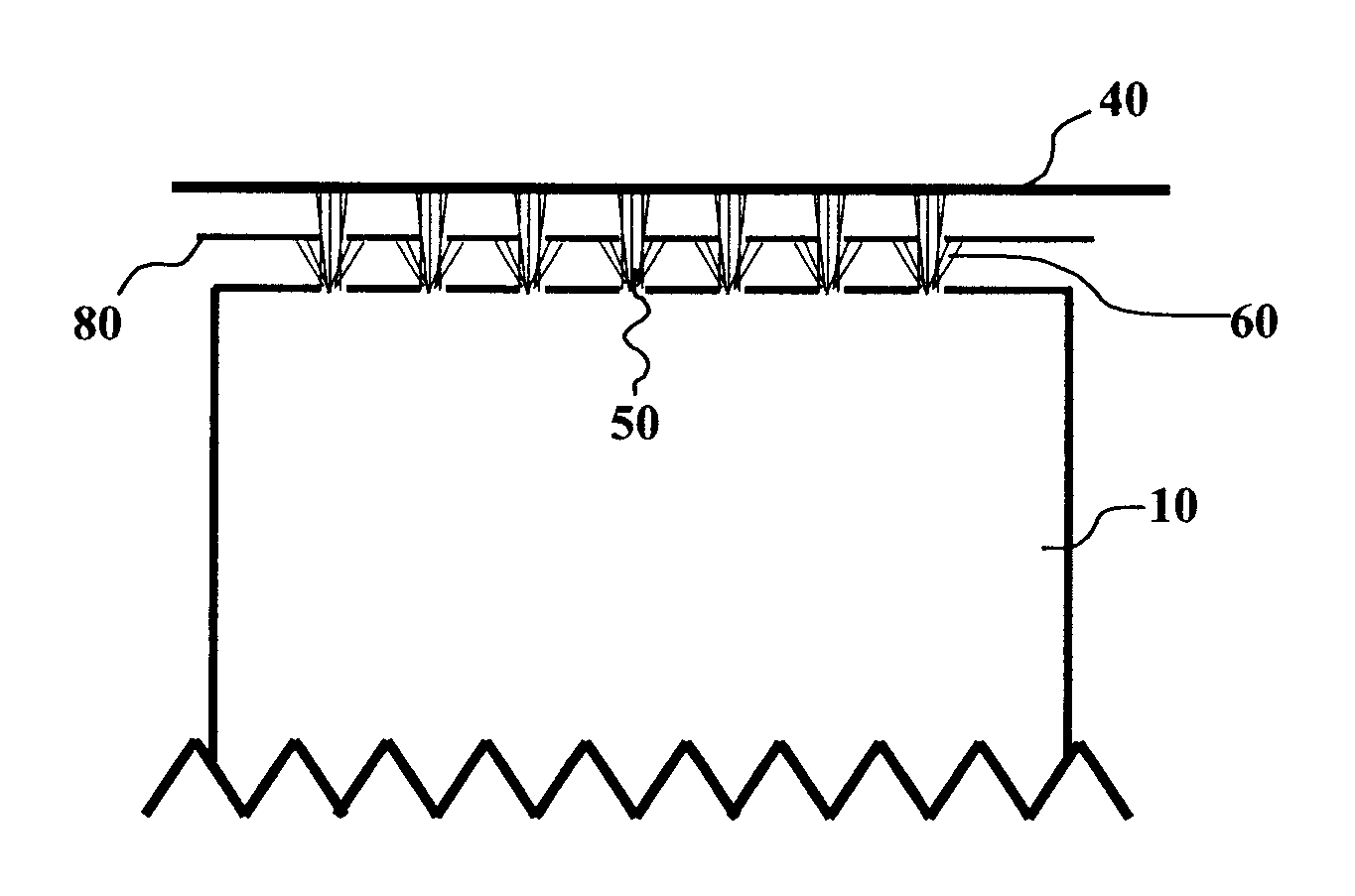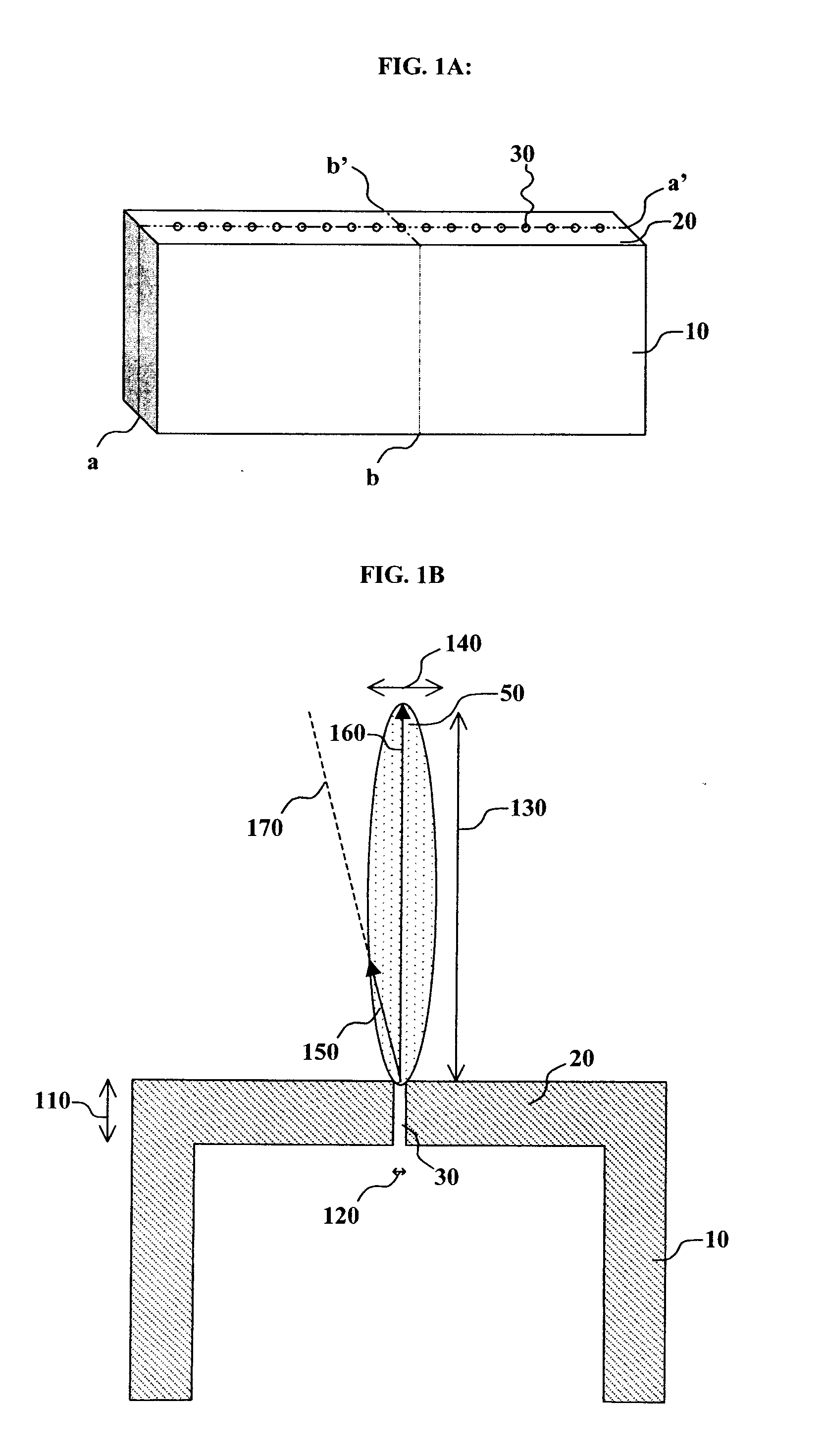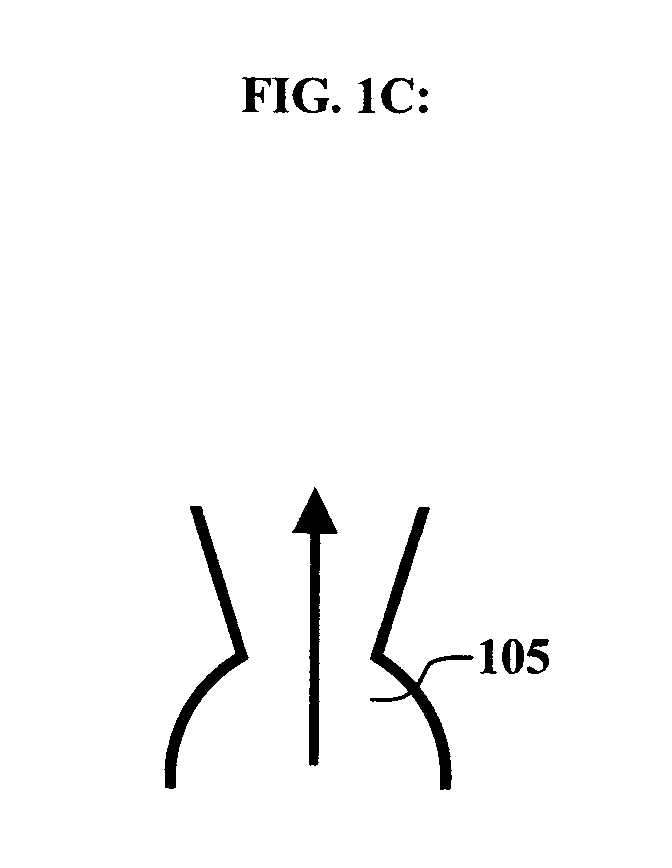Depositing organic material onto an OLED substrate
a technology of organic material and substrate, which is applied in the direction of vacuum evaporation coating, solid-state devices, coatings, etc., can solve the problems of direct contact with the surface of the substrate, abrasion, distortion, or partial lifting of the first-color pattern, and difficult production, so as to achieve a larger oled display, easy to fabricate, and high material utilization
- Summary
- Abstract
- Description
- Claims
- Application Information
AI Technical Summary
Benefits of technology
Problems solved by technology
Method used
Image
Examples
Embodiment Construction
[0034]Turning now to FIG. 1A, there is shown one embodiment of a manifold with aperture plate openings that can be used in accordance with the method of this invention. Manifold 10 includes aperture plate 20, which has openings 30. As will be shown, openings 30 are selected so as to provide beams of vaporized organic material directed to a substrate. Manifold 10 can receive vaporized organic material that is provided by a variety of vaporization methods, such as those disclosed by Grace et al. in US Publication No. 2006 / 0099345, the contents of which are incorporated by reference. In one desirable embodiment, manifold 10 is an elongated manifold. That is, the length along section a-a′ is significantly greater than the width along section b-b′.
[0035]Manifold 10 and openings 30 are constructed so as to provide a directed beam of vaporized organic material under conditions of viscous flow or molecular flow. Turning now to FIG. 1B, there is shown one cross-sectional view of manifold 10 ...
PUM
| Property | Measurement | Unit |
|---|---|---|
| pressure | aaaaa | aaaaa |
| pressure | aaaaa | aaaaa |
| length | aaaaa | aaaaa |
Abstract
Description
Claims
Application Information
 Login to View More
Login to View More - R&D
- Intellectual Property
- Life Sciences
- Materials
- Tech Scout
- Unparalleled Data Quality
- Higher Quality Content
- 60% Fewer Hallucinations
Browse by: Latest US Patents, China's latest patents, Technical Efficacy Thesaurus, Application Domain, Technology Topic, Popular Technical Reports.
© 2025 PatSnap. All rights reserved.Legal|Privacy policy|Modern Slavery Act Transparency Statement|Sitemap|About US| Contact US: help@patsnap.com



